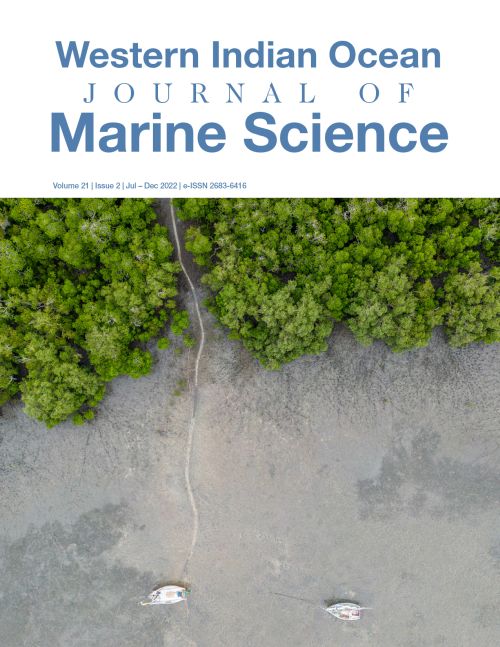Main Article Content
Simulation of spatiotemporal interannual variability of oceanic subsurface temperature off East Africa
Abstract
The oceanic subsurface variability off East Africa in the tropical western Indian Ocean plays a crucial role in ocean dynamics and living resources as well as weather and climate variability. A regional ocean model is applied to understand the oceanic subsurface interannual variability off East Africa. The region with the highest sea surface temperature (SST) variability in the offshore region lies adjacent to strong subsurface temperature variations located between 30 and 130 m corresponding with strong variations in the thermocline depth. The weakest SST variations in the Tanzanian shelf waters lie over the subsurface waters with the smallest temperature variations in the upper 200 m with weak variations in the thermocline depth. Such signals are associated with induced forcings from the Indian Ocean Dipole (IOD) and El Niño-Southern Oscillation (ENSO) in both regions with different intensity and peaking times. The IOD-induced forcings are weaker, evolving in October and November-December in the region with the weakest and strongest SST variations, respectively. However, relatively stronger ENSO-induced forcings occur in both regions with stronger signals in the region with the strongest SST variations throughout the years except in August, and it peaks in January. The ENSO-induced forcings occur in January to May peaking in March and April in the region with the weakest SST. Consequently, anomalous Rossby waves as well as local Ekman downwelling and upwelling associated with both large-scale modes occur in the region leading to the subsurface temperature variations.




